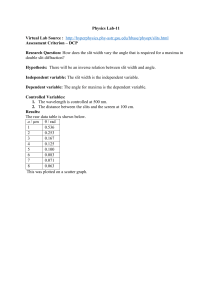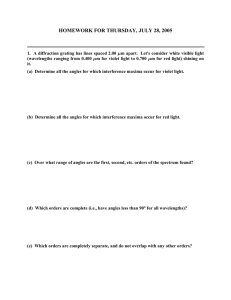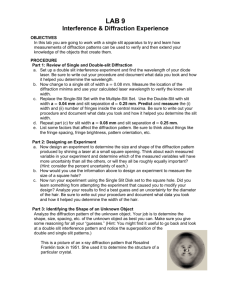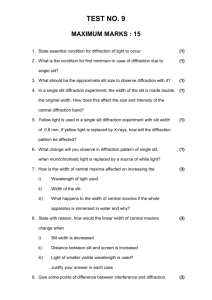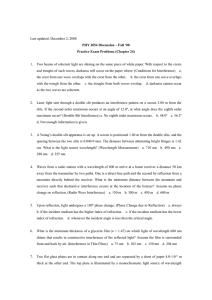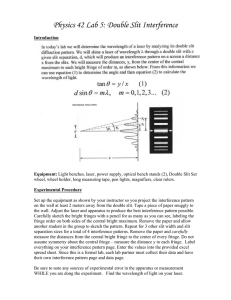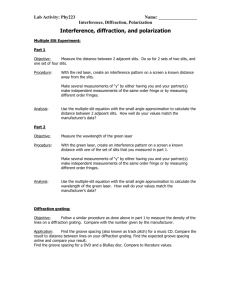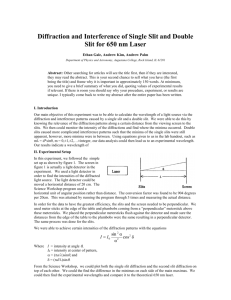GGN PUBLIC SCHOOL, ROSE GARDEN, LUDHIANA PHYSICS
advertisement
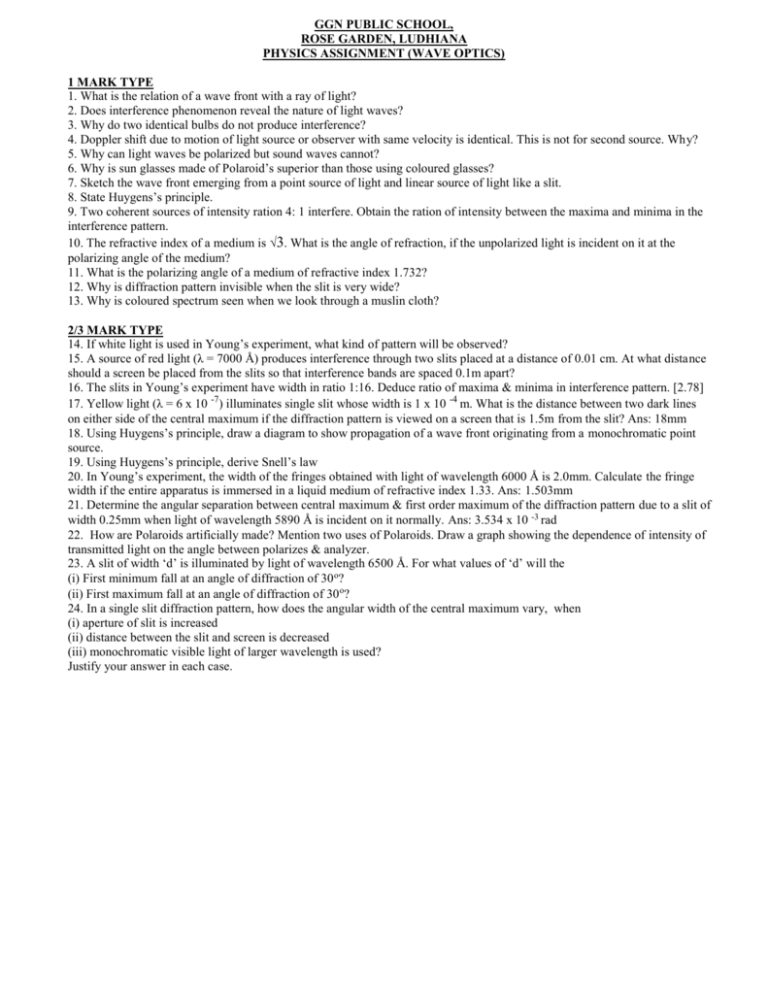
GGN PUBLIC SCHOOL, ROSE GARDEN, LUDHIANA PHYSICS ASSIGNMENT (WAVE OPTICS) 1 MARK TYPE 1. What is the relation of a wave front with a ray of light? 2. Does interference phenomenon reveal the nature of light waves? 3. Why do two identical bulbs do not produce interference? 4. Doppler shift due to motion of light source or observer with same velocity is identical. This is not for second source. Why? 5. Why can light waves be polarized but sound waves cannot? 6. Why is sun glasses made of Polaroid’s superior than those using coloured glasses? 7. Sketch the wave front emerging from a point source of light and linear source of light like a slit. 8. State Huygens’s principle. 9. Two coherent sources of intensity ration 4: 1 interfere. Obtain the ration of intensity between the maxima and minima in the interference pattern. 10. The refractive index of a medium is √3. What is the angle of refraction, if the unpolarized light is incident on it at the polarizing angle of the medium? 11. What is the polarizing angle of a medium of refractive index 1.732? 12. Why is diffraction pattern invisible when the slit is very wide? 13. Why is coloured spectrum seen when we look through a muslin cloth? 2/3 MARK TYPE 14. If white light is used in Young’s experiment, what kind of pattern will be observed? 15. A source of red light (λ = 7000 Å) produces interference through two slits placed at a distance of 0.01 cm. At what distance should a screen be placed from the slits so that interference bands are spaced 0.1m apart? 16. The slits in Young’s experiment have width in ratio 1:16. Deduce ratio of maxima & minima in interference pattern. [2.78] 17. Yellow light (λ = 6 x 10 -7) illuminates single slit whose width is 1 x 10 -4 m. What is the distance between two dark lines on either side of the central maximum if the diffraction pattern is viewed on a screen that is 1.5m from the slit? Ans: 18mm 18. Using Huygens’s principle, draw a diagram to show propagation of a wave front originating from a monochromatic point source. 19. Using Huygens’s principle, derive Snell’s law 20. In Young’s experiment, the width of the fringes obtained with light of wavelength 6000 Å is 2.0mm. Calculate the fringe width if the entire apparatus is immersed in a liquid medium of refractive index 1.33. Ans: 1.503mm 21. Determine the angular separation between central maximum & first order maximum of the diffraction pattern due to a slit of width 0.25mm when light of wavelength 5890 Å is incident on it normally. Ans: 3.534 x 10 -3 rad 22. How are Polaroids artificially made? Mention two uses of Polaroids. Draw a graph showing the dependence of intensity of transmitted light on the angle between polarizes & analyzer. 23. A slit of width ‘d’ is illuminated by light of wavelength 6500 Å. For what values of ‘d’ will the (i) First minimum fall at an angle of diffraction of 30 o? (ii) First maximum fall at an angle of diffraction of 30 o? 24. In a single slit diffraction pattern, how does the angular width of the central maximum vary, when (i) aperture of slit is increased (ii) distance between the slit and screen is decreased (iii) monochromatic visible light of larger wavelength is used? Justify your answer in each case.
